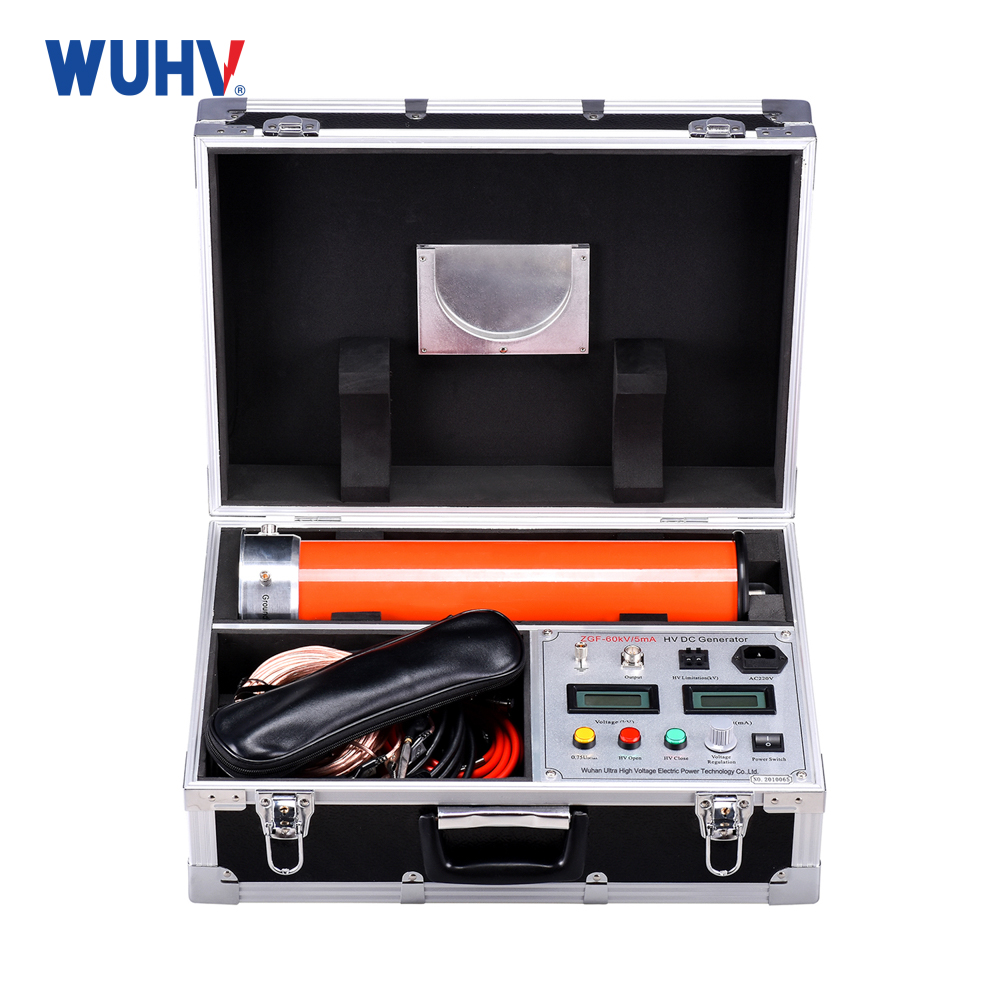The insulation resistance testerunder UHV power can help many power workers conduct various power tests more conveniently.

The insulation resistance tester can be used to measure the resistance values of various insulation materials and the insulation resistance of transformers, motors, cables, electrical equipment, etc. Below we will discuss some common issues.
1.What does the output short-circuit current of the insulation resistance tester mean?
Long cables, motors with many windings, transformers, etc. belong to capacitive loads. When measuring the resistance of such objects, the output short-circuit current of the insulation resistance tester can reflect the internal resistance of the high-voltage source output inside the megohmmeter.
2.Why use the external "G" terminal to measure higher resistance
The external "G" terminal (shielded terminal) is used to eliminate the influence of humidity and dirt in the testing environment on the measurement results. When measuring high resistance, if the results are difficult to stabilize, it is possible to consider using the G terminal to eliminate errors.
3.Why do we need to measure absorption ratio and polarization index besides measuring resistance?
In insulation testing, the insulation resistance value at a certain moment cannot fully reflect the quality of the insulation function of the test sample. On the one hand, due to insulation materials with the same function, insulation resistance occurs when the volume is large, and insulation resistance occurs when the volume is small. On the other hand, insulating materials exhibit charge absorption ratio (DAR) and polarization (PI) processes upon application of high voltage.
4.Why can electronic insulation resistance testers generate higher DC high voltage
According to the principle of DC conversion, an electronic insulation resistance tester powered by several batteries is processed through a boost circuit. A lower power supply voltage will increase to a higher output DC voltage. The generated high voltage is high, but the output power is low.
Precautions for using insulation resistance tester
1. Before measurement, perform open and short circuit tests on the insulation resistance tester to check if it is functioning properly. The specific operation is: disconnect the two connecting wires, the pointer of the handle should point to infinity, and then short-circuit the two connecting wires, the pointer should point to zero.
2. The tested device must be disconnected from other power sources. After the measurement is completed, the tested equipment must be completely discharged (about 2-3 minutes) to protect the equipment and personal safety.
3. The insulation resistance tester and the tested equipment should be separated and connected separately with a single wire. The circuit surface should be kept clean and dry to avoid errors caused by poor insulation between wires.
4. When shaking the test, place the insulation resistance tester in a horizontal position. When the handle rolls, there should be no short circuit between the terminal buttons. When testing capacitors and cables, the wiring must be disconnected while the crankshaft is rolling, otherwise reverse charging will damage the insulation resistance tester.
5. When shaking the handle, it should be done slowly and quickly, accelerating evenly to 120r/min, and taking care to prevent electric shock. During the swinging process, when the pointer reaches zero position, it cannot continue swinging to prevent the coil in the watch from heating up and being damaged.
6. To prevent leakage resistance of the tested equipment, when using an insulation resistance tester, a protective ring should be connected to the middle layer of the tested equipment (such as the internal insulation between cable shell cores).
7. The appropriate insulation resistance tester should be selected based on the voltage level of the tested equipment. For equipment with a rated voltage below 500 volts, a 500 volt or 1000 volt insulation resistance tester should be selected; For equipment with a rated voltage of 500 volts or higher, choose an insulation resistance tester with a voltage range of 1000-2500 volts. When selecting the range scale, care should be taken not to make the measurement scale excessively exceed the insulation resistance value of the tested equipment, in order to avoid significant reading errors.
8. Prevent the use of insulation resistance testers for measurement in thunderstorm weather or near equipment with high voltage conductors.



















